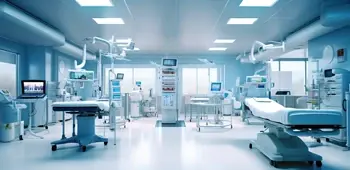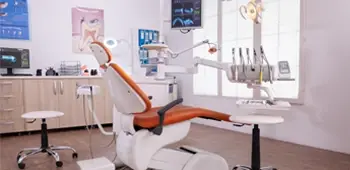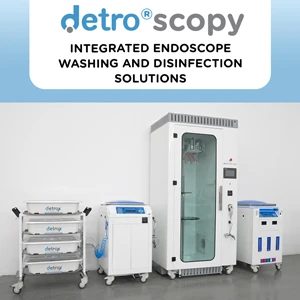Disinfection of Hospital Equipment: A Vital Process
Hospitals are places where many people apply to improve their health, but also where the risk of infection is quite high. Hospital-acquired infections are one of the serious dangers that threaten the health of patients and healthcare workers. Preventing the spread of these infections depends on the correct cleaning and disinfection of equipment. Disinfection of hospital equipment plays a vital role in ensuring hospital hygiene and infection control.
1. Why is Disinfection of Hospital Equipment Important?
Equipment used in hospitals increases the risk of spread of infections as it comes into direct contact with patients during the examination and treatment process. Equipment used in critical areas such as intensive care units, operating theatres and dialysis centres are places where microorganisms can easily grow. Nosocomial infections threaten not only the health of patients but also the safety of healthcare workers and other patients. Proper cleaning and disinfection of equipment minimises these risks.
The structure of many medical devices is complex and microbes are likely to accumulate on the surfaces or interior of these devices. If proper disinfection is not applied, microorganisms can be transported through these devices into the patient’s body and can lead to serious infections.
2. Stages of the Disinfection Process
The disinfection process of hospital equipment usually consists of two main stages: cleaning and disinfection. Each of these processes plays an important role in eliminating the risk of infection.
- Cleaning Cleaning, the first step of the disinfection process, ensures the removal of organic substances (blood, body fluids, tissue residues) and dirt on the equipment. Instrument cleaners used at this stage effectively remove dirt accumulated on the surface of the equipment. If disinfection or sterilisation is performed without cleaning, microorganisms can hide under these organic substances and an effective result cannot be achieved.
- Disinfection: Disinfection applied after cleaning aims to kill the vast majority of microorganisms. Surface disinfectants destroy bacteria, viruses and fungi found on hospital equipment. Disinfection is especially vital for frequently contacted surfaces such as operating tables, stethoscopes and medical monitors. The disinfectants used at this stage should be selected in accordance with the microbial load of the hospital.
Sterilisation processes are as important as disinfection processes. Sterilisation: In some cases, equipment must be completely sterilised. Sterilisation ensures that all microorganisms (including bacteria, viruses, spores) are destroyed and is applied to critical devices such as surgical equipment. At this stage, sterilisation methods such as high heat, chemical steam or UV rays are used.
3. Disinfection Methods for Different Types of Equipment
The structure of the equipment used in hospitals requires different disinfection methods depending on the intended use and contact areas.
- Surgical Instruments Surgical instruments require a high level of sterilisation as they come into direct contact with body tissues. These instruments are usually sterilised with high-level instrument disinfectants or autoclave devices.
- Endoscopes Endoscopes are devices used to visualise internal organs and are extremely difficult to clean. Endoscope washing and disinfection systems are specially designed to ensure the hygiene of these devices. Special cleaners and low temperature disinfection methods should be used during the cleaning of endoscopes.
- Ventilation Devices and Ventilators: Ventilation devices used in intensive care units must be carefully disinfected as they carry air to the body by direct inhalation. Suitable disinfectants should be used for these devices and the internal and external surfaces of the device should be thoroughly cleaned after each use.
4. Application Process of Disinfection: Things to Consider
In the process of disinfection of hospital equipment, several basic principles should be observed:
- Correct Disinfectant Selection: Appropriate disinfectant should be selected according to the material of the equipment and the type of microorganism. Using the wrong disinfectant may both damage the structure of the device and may not provide adequate cleaning.
- Personnel Training: Training of personnel is of great importance in disinfection processes. Incorrect practices may cause the spread of infections. Personnel should be made aware of how to clean the devices and which disinfection methods to use.
- Regular Disinfection: Hospital equipment should be cleaned and disinfected at regular intervals. Equipment that is not cleaned immediately after use prepares the ground for the rapid proliferation of microorganisms.
5. New Technologies in Disinfection of Hospital Equipment
With the developing technology, disinfection processes are also changing. Ambient disinfection devices used in hospitals are used to neutralise microbes on surfaces. Especially in intensive care and operating theatres, these devices ensure that the environment is disinfected as well as the equipment.
6. Social Impacts of Hygiene in Hospital Equipment
Proper disinfection of hospital equipment not only protects the health of individual patients, but also affects public health. Preventing the spread of hospital-acquired infections reduces the risk of transmission in the community by breaking the chain of infection. This once again demonstrates the importance of hospital hygiene, especially during pandemics.
Disinfection of Hospital Equipment Plays a Key Role in Infection Control
Regular and correct disinfection of hospital equipment is indispensable for the sustainability of the healthcare system and patient safety. Hospital hygiene should not only be limited to equipment cleaning, but should also be supported by staff training, correct disinfectant selection and integration of new technologies.
Effective implementation of these processes minimises the risk of infection and ensures that patients are treated in a safe environment. With modern disinfection systems and products, hospitals can make a significant contribution to public health by maximising hygiene standards.






















